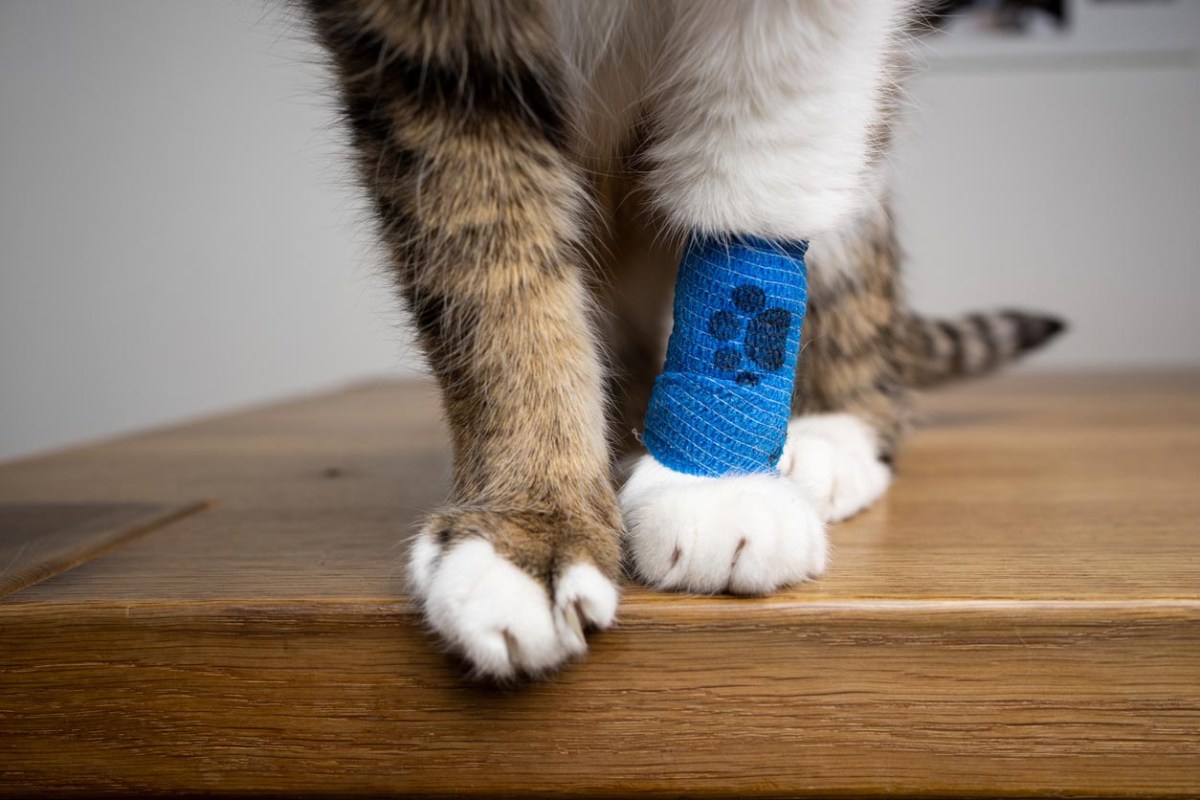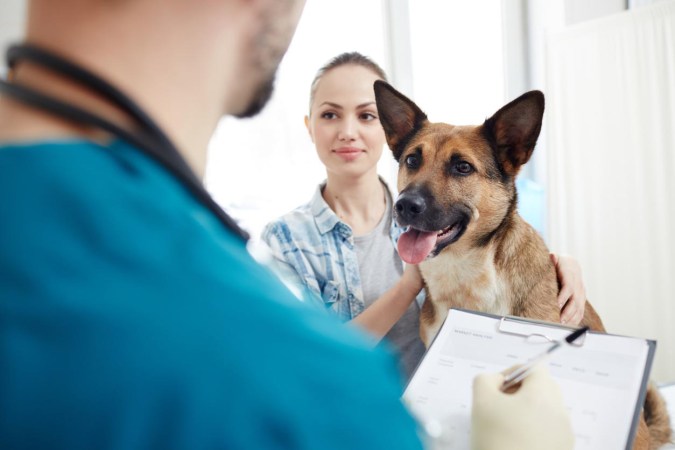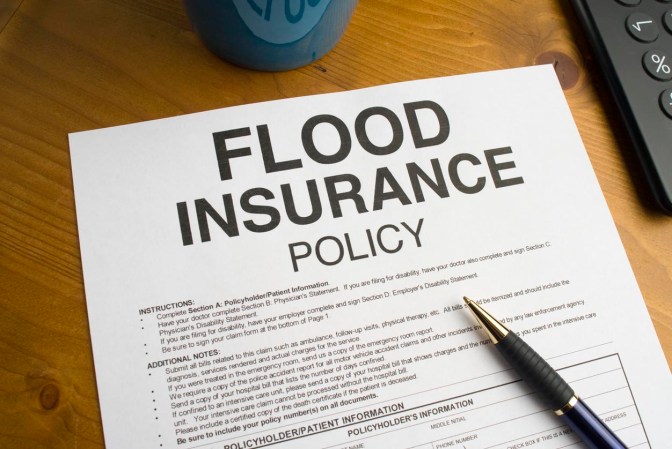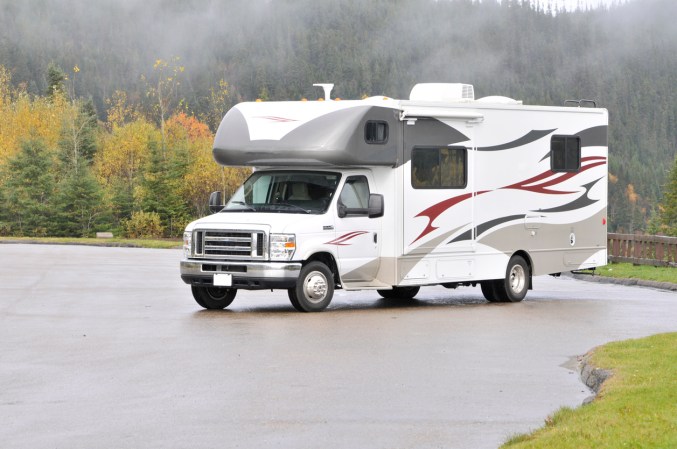We may earn revenue from the products available on this page and participate in affiliate programs. Learn More ›
Highlights
- On average, pet insurance with accident and illness coverage costs $53.34 per month for dogs and $32.25 per month for cats.
- Pet insurance costs per month will depend on the type, breed, and age of the animal, as well as the type of coverage selected, amount of coverage purchased, and the policy’s reimbursement level and deductible, among other factors.
- Pet owners can purchase accident-only, accident and illness, or wellness coverage, depending on the type of treatment they want to be reimbursed for if they take their pet to the vet. Wellness coverage may also be purchased as an add-on to accident-only or accident and illness policies.
- Pet owners may be able to save money on their insurance costs by exploring discount opportunities through their workplace, specialty groups, or insurance providers, in addition to shopping around to find the most affordable rates.
Pets can add warmth, love, and wackiness to a home, and the owners who adore them often make sacrifices to keep their pets happy and safe. Many pet owners budget for anticipated pet expenses such as food and litter and splurge on treats and luxuries. But they may also worry about budgeting for the high cost of veterinary care, especially in emergencies. In many cases, pet insurance can help reduce the cost of veterinary care considerably, making it easier for pet owners to provide the care their pets need.
How much is pet insurance? The average monthly cost of health insurance for animals is around $53 for dogs and $32 for cats for accident and illness coverage. Adding up the monthly premiums brings the annual average cost of pet insurance to about $640 for dogs and $387 for cats, according to the North American Pet Health Insurance Association.
This may seem like a lot, but if a cat or dog is injured or falls ill, a single emergency vet bill can easily eclipse a year’s premium. Pet insurance plans have a number of conditions, exclusions, and limitations, so it’s critical for pet owners to carefully examine what’s covered, what isn’t, what costs may still remain after the insurance has paid out, and what conditions must be met for the pet insurance coverage to kick in. Once those questions are answered, owners can consider all the factors that determine pet insurance cost and decide if it’s a good choice for them.
Factors in Calculating Pet Insurance Costs
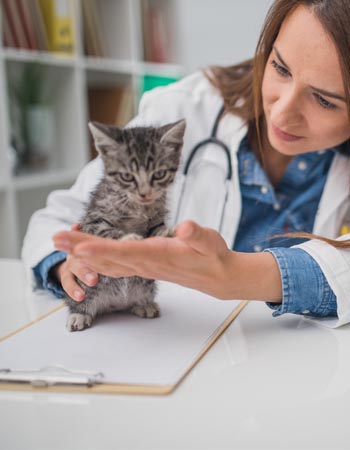
Pet insurance prices can vary depending on the species, breed, and age of a pet, among many other considerations. When considering a pet insurance policy, owners will need to weigh a number of factors and balance the cost against the potential payout to determine if pet insurance is worth it.
Coverage Type
Health insurance for pets is available with different types of coverage—there’s no single policy that covers all types of medical and life events. Depending on the type of policy purchased, pet medical insurance may cover accidents, illness, or wellness visits, and the costs of those types of policies will vary based on the amount of coverage provided. Policies with more comprehensive coverage—accident and illness insurance, for instance—tend to cost more than pet insurance policies offering more limited coverage such as accident-only insurance.
In addition, there is a rare type of pet life insurance offered by some companies. Unlike standard life insurance for people, which exists to cover burial expenses and provide for surviving family members who may struggle without the income of their lost loved one, pet life insurance is intended to cover the financial loss of a pet that was in some way or another providing income for its owner. For example, show dogs or race horses may qualify for this type of insurance, which is also referred to as mortality and theft insurance. Most family pets will not qualify for this insurance, even though their loss would be painful for their family. For owners who have invested significantly in an animal for those purposes, however, this type of insurance may make sense and is priced based on the risk of loss and the established value of the animal.
Coverage Amount
Pet owners may be inclined to purchase as much pet insurance as they can for their dog or cat, but higher coverage amounts will increase the cost of a policy. The most expensive pet insurance policies offer an unlimited annual coverage amount. This means that the owner pays their vet bills up front, but once their deductible has been met, the insurance company will reimburse them for their covered costs without setting a limit. Policies with unlimited annual coverage are often significantly more costly than policies with a per-event or per-year maximum, which only pay out claims up to the coverage limit (after the deductible has been met). Pet owners have the option to adjust these coverage caps within set intervals, but policies with a per-event or per-year maximum will become more expensive as their coverage limits go up.
Reimbursement Level
Pet insurance policies usually require the policyholder to pay for veterinary services themselves, then file a claim for reimbursement. Insurance policies very rarely cover 100 percent of the veterinary costs, and policyholders can choose the level of reimbursement they would prefer. In the event that a pet needs care, the policyholder would file a claim for the covered service. The insurance company would first subtract the amount remaining on the deductible, then would reimburse the customer for a percentage of the remaining total as outlined by their policy terms.
Customers can usually choose between reimbursement options of 70, 80, or 90 percent. If the veterinary bill for a covered service came to $5,000, the deductible was $500, and the plan had an 80 percent reimbursement policy, the policyholder would be responsible for the first $500, and the insurance company would cover 80 percent of the remaining $4,500. The insurance provider in that scenario would reimburse the policyholder $3,600. The lower the reimbursement level, the less expensive the policy will be. Higher reimbursement levels may cost more, but pet owners may find it worth the additional expense to receive larger payouts on any claims they file.
Age of Pet
In most cases, insurance coverage is less expensive for young, healthy pets. In terms of illness and wellness coverage, puppy insurance will often have lower premiums as young pets tend to be healthier and won’t suffer from age-related chronic illnesses. Owners of older pets will incur higher premiums because older animals’ veterinarian costs are anticipated to be higher, and some companies may even have a cutoff age after which they won’t enroll animals for coverage. There’s a benefit to insuring pets when they’re young: Many companies will continue providing coverage as the pet gets older, even if they wouldn’t enroll an older pet for the first time. In addition, most pet insurance policies do not cover pre-existing conditions, so purchasing a policy before pets develop chronic health issues will increase the likelihood of such health problems being covered by pet insurance.
Type and Breed of Pet
Every pet insurance company has its own tiers of coverage costs. Some breeds of both dogs and cats are more likely to experience certain health problems than others, and pet insurance providers have priced policies for those breeds accordingly. When pricing policies, it’s important for pet owners to check the documentation for each company to see if higher rates are in place for the animals being insured.
Pet insurance for dogs may be more expensive for larger-breed animals. Large-breed dogs are more likely to have joint and hip problems, and they also tend to have heart problems. As medication doses (and sometimes hospitalization rates) are calculated by weight, the illnesses and emergencies of large dogs will cost more to treat. That said, certain purebred dogs, large and small, have hereditary chronic illnesses that can be expensive.
Cats can have medical challenges that are unrelated to size, as pet cats don’t vary quite so much in size as dogs do. The cost of pet insurance for cats can depend on the genetic makeup of the cat: Like dogs, some breeds are prone to medical challenges, such as eye disease, tooth and gum decay, and joint problems. For instance, hairless breeds such as sphynx cats may be more likely to develop skin conditions that require medical attention. In those scenarios, dog or cat breeds that are prone to health issues covered by pet insurance may cost more to insure.
Standard pet insurance policies don’t typically cover more exotic animals such as reptiles, but pet owners may be able to purchase coverage for these types of pets at an additional cost.
Deductible
As with most types of insurance, pet insurance policies have a deductible that must be met before the policyholder will receive a payout on a claim. Selecting a lower deductible can reduce out-of-pocket costs down the road, but it will also increase the policyholder’s insurance premiums. Pet owners have to decide whether they’d prefer to pay a higher insurance premium up front in exchange for a lower out-of-pocket cost at the time of pet illness or injury, or a lower insurance rate and a higher deductible. Those who select a higher deductible may wager that they may not need to file a claim over the course of the year and would rather take advantage of lower insurance rates.
Discounts
Pet owners may have their own hacks for living with a pet, but when it comes to lowering pet insurance costs, their best bet may be to seek out available discounts to defray the cost of insurance. Some workplaces offer discounts on pet insurance policies as one of their benefits, usually with a selected partner insurance company. Membership in organizations such as the American Automobile Association (AAA), American Association of Retired Persons (AARP), and other groups can be a ticket to a less expensive policy, as can being a current or former member of the military. Some homeowners insurance companies offer pet insurance (both liability and health insurance) as an endorsement for a much lower cost than purchasing a policy outright. They may also offer discounts for policyholders who bundle homeowners and pet insurance. And for owners of multiple pets, many pet insurance companies offer multi-pet discounts. When shopping for a policy, pet owners will want to check with employers, clubs, and specialty groups for potential discounts. And it’s a good idea, when speaking to an insurance agent, to ask about additional cost-saving opportunities—there may be discounts that aren’t listed on a website or brochure that can slice a nice chunk off a policy price.
Geographic Location
Pet insurance costs are based, to some degree, on a market rate and the cost of living in a general area. Pet insurance generally costs more in urban areas because the veterinarians can charge more in those areas than in rural areas where the cost of living is lower. Since insurance companies pay the policyholder a contracted percentage of the veterinary bill, their cut of the bill will be higher when the bill itself is more expensive, so it stands to reason that where veterinary services are more costly, pet insurance policies will be too.

Types of Pet Insurance
When pet owners are considering pet insurance policies, one of the first steps is to take a look at the types of policies a company offers and see how those types of coverage are packaged and priced. Pet owners will need to assess whether or not the age and current health of their pets warrant each type of coverage. It’s important to remember that homeowners insurance and renters insurance will not cover a pet’s medical expenses. While pet liability insurance for renters can cover injuries or damages to others caused by the policyholder’s pet, pet owners will need to purchase a pet insurance policy if they want to be reimbursed for certain vet bills.
Accident-Only Coverage
Have a dog who can houdini itself right out of the house and yard to explore all the smells? Or a nosy kitty who doesn’t know that it’s a bad idea to rummage around underneath the sink looking for snacks? If a pet owner’s chief concern is the sudden cost of emergency veterinary care in case of an injury brought on by an accident, then accident-only coverage is a great option. This type of coverage will reimburse policyholders for the cost of emergency surgery or treatment at an emergency animal hospital or veterinarian. Accident-only coverage is typically the most affordable type of pet insurance, and it’s often chosen by pet owners who worry about the sudden, unexpected decisions that may need to be made if their pet is badly injured. Balancing budgetary decisions against the life of a pet can be devastating, so often this is the type of insurance selected by owners of young, otherwise healthy pets.
Accident and Illness Coverage
Accidents aren’t the only cause of sudden, unexpected medical expenses for pet owners. As pets age, they become more likely to develop life-threatening diseases, chronic illnesses, degenerative joint problems, or other sudden and expensive ailments. A combined policy that includes accident coverage with illness coverage is more expensive than accident coverage alone, but it can offer peace of mind for pet owners who worry about the expensive testing and medical treatment that an unexpected illness could bring. This type of coverage can be a good financial choice for pet owners who budget and plan for annual exams and vaccinations but worry about being able to manage sudden and unanticipated medical costs.
Wellness Coverage
For pet owners whose chief concern is the regular cost of pet health maintenance—physical checkups; annual heartworm and parasite testing; heartworm, flea, and tick prevention; vaccines; and teeth cleaning—some pet health insurance companies offer wellness coverage, which reimburses policyholders exclusively for wellness and maintenance visits. Although this type of coverage is a little more expensive than others, it can be a great deal for owners whose pets need more frequent teeth cleanings or who have conditions that require more frequent checkups.
It’s important to note that wellness coverage doesn’t include accident or illness coverage, so pet owners will have to consider which kinds of coverage they’d like to bundle together if they’d also like to protect against unexpected costs. In some cases, wellness coverage may only be available as an add-on to an accident-only or accident and illness policy.
Benefits of Getting Pet Insurance
Insurance can feel like a gamble sometimes: Anyone who has ever waded through an open enrollment period for insurance through their workplace knows that there seem to be endless coverage options that make customers feel as though they’re taking a huge risk if they don’t buy more insurance. But anyone who has ever gone to the emergency room with no insurance or a very high deductible can explain why they wish they had had more coverage. It’s a tough balance. Pet insurance is an extra expense, there’s no doubt, but that extra expense can result in some important benefits.
Financial Protection
An emergency vet bill for a major injury or illness can add up to thousands of dollars, which pet owners would need to pay entirely on their own if they didn’t have pet insurance. Many pet owners don’t have that kind of spare cash lying around, so the money will have to come from somewhere if they want to save their pet—which can mean going into debt to pay for care for a beloved pet. Pet insurance allows owners to budget for premiums and deductibles, and then feel comfortable that they will be able to afford their pets’ care.
Pet Health
The prohibitive cost of veterinary care can cause even responsible pet owners to defer treatment if their dog or cat is ill. They may wait to see if an injured paw or upset stomach takes care of itself before taking their pet to the vet. Weighing the cost of vet bills against a potential danger is never ideal, but it’s a gamble many pet owners have to take if they’re not sure they can manage the expense when there’s no obvious medical emergency. This delay of care can have terrible consequences in some situations—an animal that suddenly stops eating may be suffering from very serious medical issues requiring immediate attention, for instance. If a pet suddenly begins vomiting, it’s possible the animal could have been poisoned by chewing on an azalea or one of the many other common plants toxic to dogs and cats. Knowing that the emergency visit will be at least partially covered by an insurance policy makes it easier to choose to get care.
For some customers, it’s the necessary annual or semiannual care that presents a financial burden. Wellness insurance plans can make it easier to ensure that pets get their annual vaccinations and checkups on a regular schedule, resulting in a healthier dog or cat in the long run.
Peace of Mind
Owning a pet is a long-term commitment with ongoing costs that need to be budgeted for. Many things happen that people can’t control and which may affect the amount of money they have available to spend on their pet’s health and well-being. Job changes and job loss can result in unexpected expenses and relocation, leaving pet owners scrambling to find a pet-friendly apartment or house on short notice, or a general depletion of household funds. And car transmissions fail, usually at the worst possible time. Knowing that pet veterinary expenses are largely taken care of ahead of time can allow owners to manage their budget without worrying about surprise expenses in that department. It can also allow them to confidently save for other household emergencies through the year.
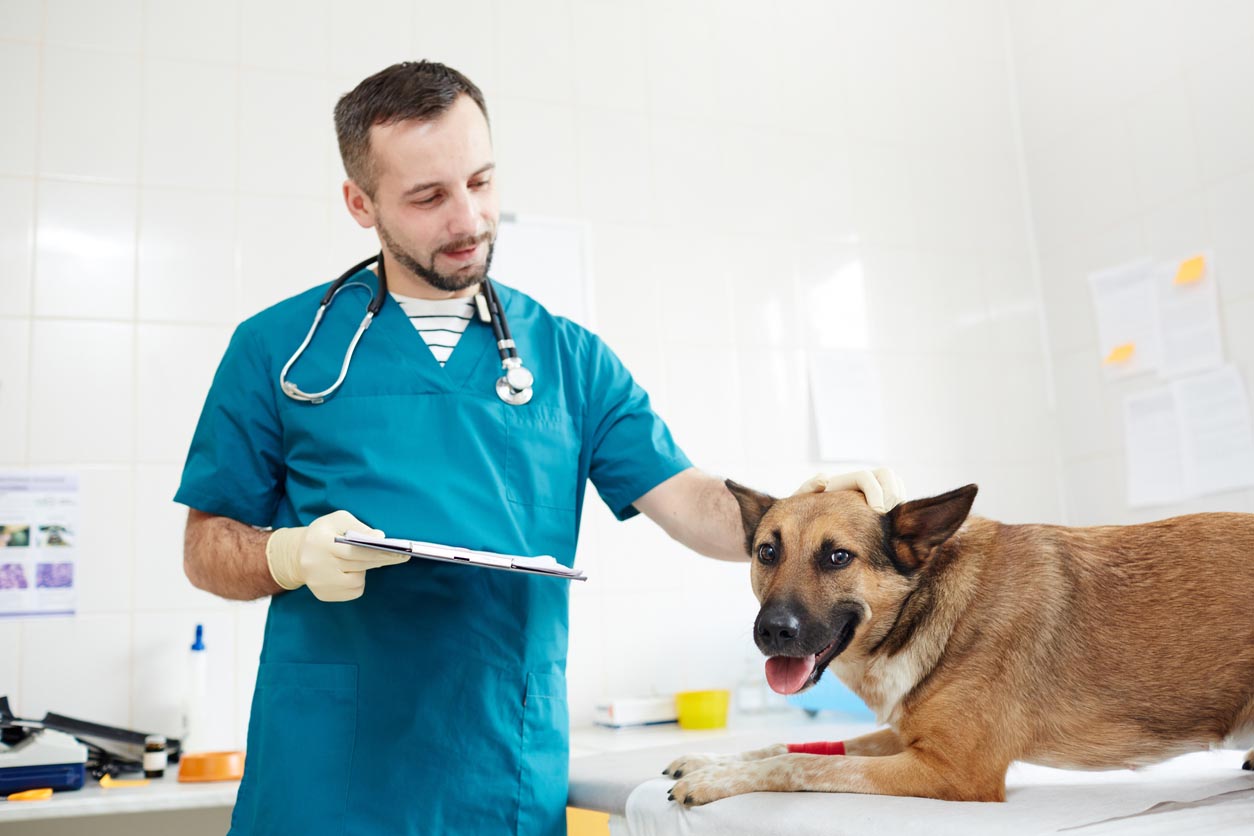
How to Save Money on Pet Insurance
Pet owners who decide that insurance for their dog or cat is the right financial choice for them will still want to consider how they can save on premiums. There are quite a few options available to help pet owners lower their insurance costs.
- Pet owners can ask their employer’s HR department if pet insurance discounts are part of their benefits package or an employee perks plan.
- They can also check with membership organizations such as AARP and AAA, along with warehouse clubs such as Costco, BJ’s, and Sam’s Club to see if members receive discounts on pet insurance.
- Checking homeowners or renters insurance policies to see if pet care coverage can be added to an existing policy may offer a more affordable option compared with purchasing a stand-alone policy.
- Some veterinarian offices offer discounts for pet insurance policies, though it’s preferable to make sure the insurance company isn’t actually affiliated with the vet’s office as that may limit coverage if the policyholder decides to change vets down the road.
- Pet owners with more than one pet can check on the availability of multi-pet discounts with insurance companies.
- Requesting pet insurance quotes from several insurance providers can help pet owners shop around for the best rate for the amount and type of coverage they want.
Questions to Ask About Pet Insurance
There are many pet insurance companies to choose from, and coverage terms, reimbursement options, premiums, and deductibles may all differ from one provider to another. This means customers have to do their homework and ask a lot of questions so they can find the right coverage for their pet and their budget. These are some of the pet insurance questions worth asking before purchasing a policy.
- What types of insurance do you offer? Can they be bundled?
- What are the coverage limits or caps?
- What deductible options do you provide?
- Do you pay veterinarians directly, or do I have to pay up front and get reimbursed later?
- Do you cover pre-existing conditions?
- Are there any restrictions on the age of a pet?
- Will the insurance policy cover a trip to any veterinarian?
- Are medications covered?
- What, specifically, is not covered by the insurance policy?
- Is there a waiting period before coverage begins?
FAQs
With a little investigation, many pet owners will find that insurance for animals can save them money on vet bills, enable them to care for their pets’ health without risking economic disaster, and give them peace of mind knowing they can provide the care their pets need. Answering a few of the most common questions regarding pet insurance can help pet owners make a more informed decision when selecting an insurance provider.
Q. Does pet insurance cover dental care?
Some plans do cover preventive dental care, but it’s important to check the policy terms. Emergency plans generally will not cover dental care unless there is a dental emergency such as an infection, abscess, or broken tooth. Some wellness or preventive care plans do cover dental cleaning and checkups, especially in animals that are prone to dental disease.
Q. Does pet insurance cover pre-existing conditions?
In most cases, no. A pet insurance plan will not cover any condition that was present prior to the end of the waiting period before coverage begins. The insurance provider may request the pet’s medical records when evaluating a claim, so if a vet has recorded observations suggesting the pet has a particular health concern that the owner did not disclose when applying for coverage, the claim may be denied and the coverage canceled. However, if the pet develops a condition while insured, that is not considered a pre-existing condition, so the pet likely will remain insured as long as the premiums are paid.
Q. Can you cancel pet insurance if your pet dies?
In most cases, yes. Every company’s cancellation policy is different. Some companies may charge a fee for cancellation—but usually only if the cancellation is for a reason other than the pet’s demise. Many insurance providers will immediately cancel a policy when a pet dies and some may even refund a prorated portion of the premium.

